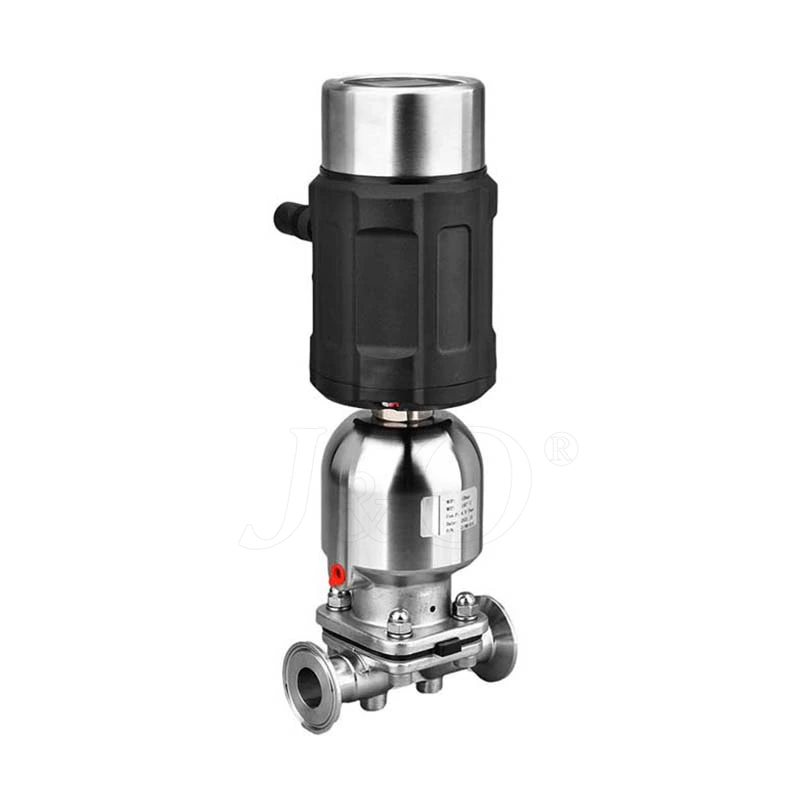Working Principle Of Sanitary Diaphragm Valve
The working principle of Sanitary Diaphragm Valve is to control the flow of fluid by directly pressing the rubber membrane on the valve seat through the operation of the valve stem.
The sanitary diaphragm valve is a special shut-off valve, whose core components include valve body, diaphragm, valve cover and valve stem. The diaphragm is usually made of soft materials such as rubber and polytetrafluoroethylene plastic, which completely separates the inner cavity of the valve body from the inner cavity of the valve cover. The on-off of the fluid is controlled by changing the position of the diaphragm:
Opening process: When the valve stem is driven up, the diaphragm is lifted up, and the fluid can flow in through the valve.
Closing process: When the valve stem descends, the diaphragm presses on the valve body, blocking the fluid channel and closing the valve.
This design makes the sanitary diaphragm valve perform well in handling corrosive and viscous fluids. Because its operating mechanism is not exposed to the conveyed fluid, it will not be contaminated, and no packing is required, reducing the risk of leakage.
